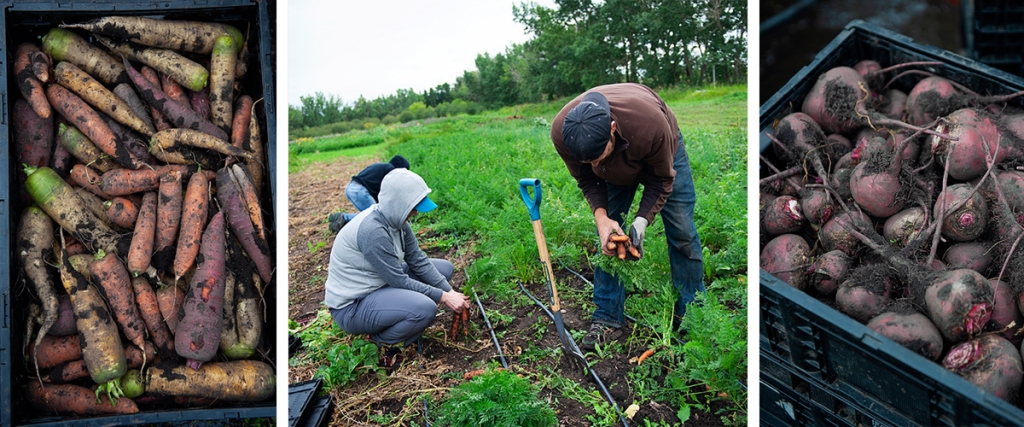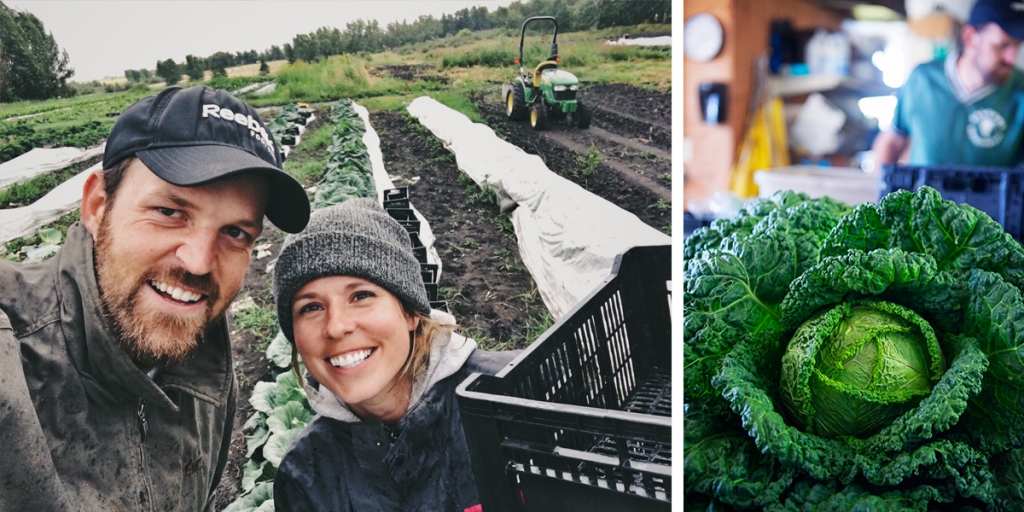{How to Store Garden Vegetables Over Winter}

Every year we are asked by people growing their own food, “How do I store my garden harvest through the winter so I can feed my family?”
There are a number of items here on the farm that we store (and sell) throughout the winter and well into spring—long after the snow has come and put an end to the garden itself. Our storage vegetables typically feed our family all the way through to March and even April. Depending on the varieties of fall crops you grow and the space you have to store them, you can do it too!
Here’s how:
Onions + Garlic
These guys need to be pulled from the ground mid to late summer and cured before storing.


When to harvest?
ONIONS >> Tops will begin to flop over at the neck partway through summer. Once half or more have flopped, bend the rest and leave them in the ground for another 1-2 weeks to finish maturing. Don’t water anymore and keep in mind to harvest them before any big rains are expected– moisture at this point will cause rot.
Pull from the ground on a dry, sunny day and lay them out on the ground (or in open area) allowing 1-2 days for roots to dry.
GARLIC >> Pull when leaves are about two-thirds of the way withered and brown, stems should still be green. Do not lay out to dry, move directly to curing.
How to cure them?
Lay out on racks or hang dry with twine in a sheltered, shady, well-ventilated spot (covered porch, garage, etc. using fans if necessary to maintain air-circulation). Don’t clean yet. Do not over-crowd. Leave to cure for 2-4 weeks until very dry.
Once fully dried, trim roots and stems with scissors, and flake off outer layers of dirty skin.
Where to store?
Store in a dry, dark, airy space inside paper, mesh, burlap bags or baskets. (Ideal temperature is between 4° and 10°C)
Carrots + Beets
You can pull both late in the season, even after a few frosts or an early snowfall, but before the ground freezes.


When to pull?
The longer you leave these fellows in the ground, the sweeter they become. Frosts and early snowfall don’t affect quality of the vegetable root, so long as you get them out before the ground freezes.
How to prepare?
Remove the tops, and root hairs (to prevent rot). You may wash, or leave unwashed, before sealing in sturdy plastic bags.
Where to store?
Store them in the coldest part of your fridge, cooler, cellar, or cold storage (ideal storage temp is just 1°C if you are able to get your refrigeration that low). Inspect regularly through the winter, throwing away any that have begun to spoil.
Cabbages
Storage varieties will last all winter long and all through the spring if stored properly.

When to harvest?
These guys should be picked when the heads are solid and firm all the way through. Depending which variety you’ve grown, this could be mid to late summer– best storage varieties won’t be ready until fall.
How to prepare?
Peel off large outer leaves until you have tight round heads. Don’t wash cabbage before storing.
Where to store?
A cool, damp environment is needed for storing cabbages. Store in refrigerator, cooler, or root cellar, sealed in heavy plastic bags to keep the moisture in. Inspect from time to time, peel back and discard outer leaves that are beginning to spot.
Potatoes
Dig up at the end of fall before the ground freezes.


When to dig up?
Potatoes can be harvested once the tops of the plants have died off, or left in the ground a few weeks longer. Light frosts won’t harm them, but they need to be pulled before the ground freezes.
How to prepare?
Can be washed or left unwashed. Either way, leave potatoes outdoors in a shaded area to dry for a few hours after harvesting, and before storing.
Where to store?
Store in a cool, dark, well-ventilated space inside paper, mesh, burlap bags or covered baskets. (Ideal temperature is between 6° and 10°C– slightly above refrigeration temp. Do not refrigerate them.)
Warm temperatures will encourage potatoes to sprout. Exposure to light will cause them to turn green. Cool and dark is what you want.
Do not store near onions as that will induce ripening.
Winter Squash + Pumpkin
Pick at the end of fall before the heavy frost hits. Cure before storing.


When to pick?
These can be harvested when the fruits have turned a solid, mature colour, the rind has become hard, and they sound hollow when gently tapped. They must be picked before heavy frost hits. If some are not fully ripe, you can pick them anyways as they will ripen somewhat during curing (though they will not taste as sweet and won’t last as long).
How to cure them?
You can wash them or not. Leave squash out to cure in the sun (warm temperatures, ideally 26-30°C with good circulation) for 10-14 days before moving into storage. Curing helps the stored squash harden and resist rot, and is essential for longterm storage. (Smaller squashes such as acorn, spaghetti or delicata do NOT need to cure and should be moved directly into storage.)
Where to store?
Store squash in a cool, dry place (10- 15°C) on a shelf or rack, not on the floor.
Do not store store near apples, pears or ripening fruit.
Final NOTE about Vegetable Storage:
Inspect your stored vegetables routinely for spots or signs of softening. Vegetables with signs of rot should be removed as soon as possible. Expect to lose some of your stored vegetables over the winter.
I hope this helps as you plan your gardens every spring, choose your crops, and look to keep your families fed throughout the winter. There is nothing like eating seasonal and homegrown food— best of luck!



